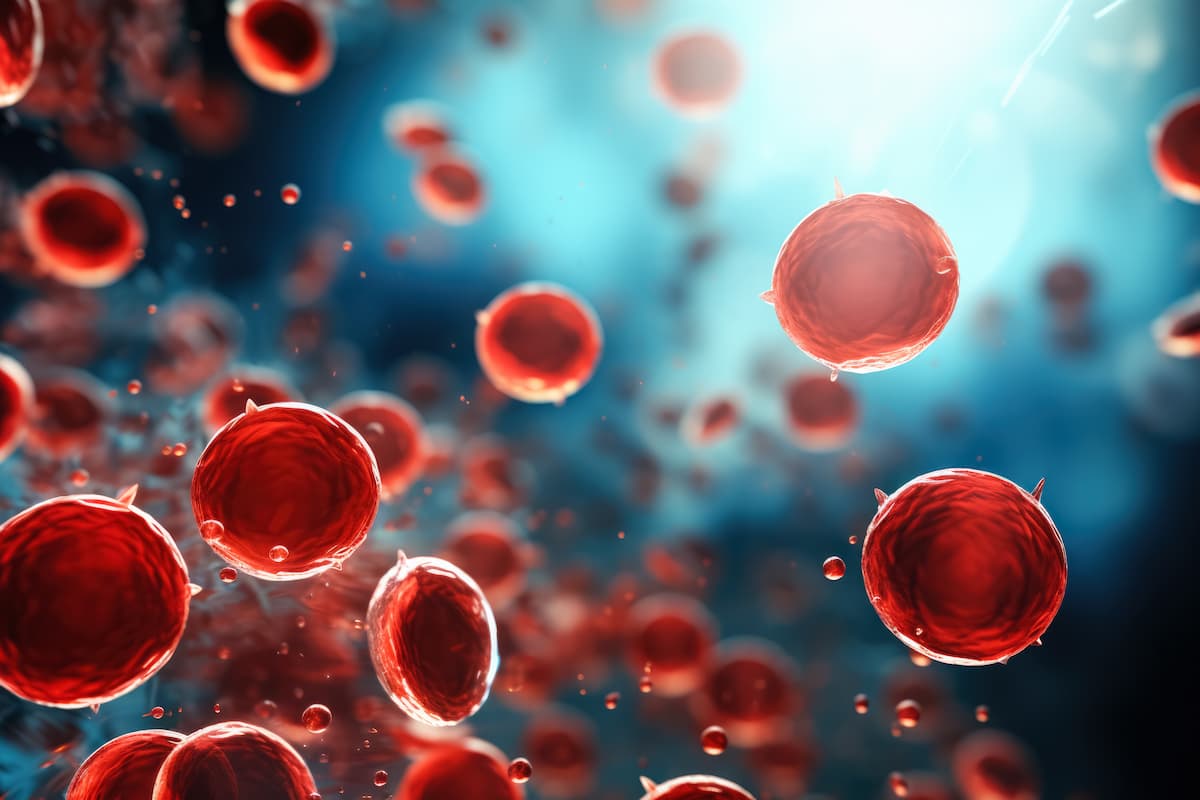- Center on Health Equity & Access
- Clinical
- Health Care Cost
- Health Care Delivery
- Insurance
- Policy
- Technology
- Value-Based Care
Molecular Response to Therapy Linked With Event-Free Survival in PV
New findings suggest that reducing the variant allele frequency of JAK2V617F should be a goal of treatment for polycythemia vera.
Molecular response to therapy appears to correlate with event-free survival in patients with early polycythemia vera (PV), according to a new analysis. The findings were published in a research letter in the journal HemaSphere.1
While clonal expansion of JAK2V617F-mutated hematopoietic stem cells is implicated in almost all cases of PV, the potential implications of molecular response to therapy (MR) as demonstrated by reduced frequency of the variant allele have been disputed, the authors explained.
The findings also show that ropeginterferon alfa-2b is an effective therapy for molecular response in early polycythemia vera. | Image credit: fotogurmespb.- stock.adobe.com

The question is difficult to study, they noted, since the early onset of PV is associated with nonspecific symptoms. However, the authors cited a 2023 study assessing ruxolitinib (Jakafi; Incyte) in patients with high-risk PV found molecular response was correlated with superior outcomes, including event-free survival (EFS).2
In the new report, researchers examined data from the phase 3 PROUD-PV study and its extension trial, CONTINUATION-PV, to see whether there was a meaningful relationship between MR and EFS in patients with early-stage PV.1
The PROUD-PV trial involved participants with low- or high-risk PV requiring cytoreduction who were treatment naive or who had been pretreated with hydroxyurea for less than 3 years without resistance or intolerance. Participants were randomized on a 1:1 basis to receive either ropeginterferon alfa-2b (Besremi; PharmaEssentia) or hydroxyurea for 12 months. In CONTINUATION-PV, participants remained in their same treatment arm, though control-arm patients were allowed to switch from hydroxyurea to any standard treatment.
The final analysis of CONTINUATION-PV included 95 participants in the ropeginterferon alfa-2b cohort and 74 in the hydroxyurea/best available therapy control group. The median treatment duration for the two study arms was 6.3 years and 6.0 years, respectively.
The authors found that patients in the ropeginterferon alfa-2b arm had a reduction of median JAK2V617F variant allele frequency from 37.3% at baseline to 8.5% at year 6, with 66.0% of patients achieving MR. Patients in that cohort spent a median cumulative proportion of time in MR of 66.7%.
Patients in the control arm had lower rates of MR. At 6 years, control-arm participants saw their median variant allele frequency increase from 39.4% to 50.4%. Just 19.4% of participants in the control arm achieved MR, and they spent a median cumulative proportion of time in MR of just 8.4%.
The differences in MR correlated with differences in EFS. Events occurred in 5 or the 95 patients in the ropeginterferon alfa-2b group and 12 of 74 patients in the control group. When the investigators accounted for the 7 patients who switched from hydroxyurea to interferon (3 of whom achieved MR), the adjusted data aligned with the overall results.
A model to incorporate changes in MR over time showed that the risk of events increased by 4.2% for every percentage point increase in absolute variant allele frequency. This suggests that PV therapy should have JAK2V671F as one of its goals, the authors explained.
“The present analysis shows for the first time that MR correlates with improved EFS in patients with early-stage PV,” the authors wrote. The findings also show that ropeginterferon alfa-2b is an effective therapy with which to achieve MR in these patients.
References
1. Kiladjian JJ, Klade C, Georgiev P, et al. Event-free survival in early polycythemia vera patients correlates with molecular response to ropeginterferon alfa-2b or hydroxyurea/best available therapy (PROUD-PV/CONTINUATION-PV). Hemasphere. Published online May 3, 2025. doi:10.1002/hem3.70137
2. Harrison CN, Nangalia J, Boucher R, et al. Ruxolitinib versus best available therapy for polycythemia vera intolerant or resistant to hydroxycarbamide in a randomized trial. J Clin Oncol. 2023;41(19):3534-3544. doi:10.1200/JCO.22.01935
Managed Care Reflections: A Q&A With A. Mark Fendrick, MD, and Michael E. Chernew, PhD
December 2nd 2025To mark the 30th anniversary of The American Journal of Managed Care (AJMC), each issue in 2025 includes a special feature: reflections from a thought leader on what has changed—and what has not—over the past 3 decades and what’s next for managed care. The December issue features a conversation with AJMC Co–Editors in Chief A. Mark Fendrick, MD, director of the Center for Value-Based Insurance Design and a professor at the University of Michigan in Ann Arbor; and Michael E. Chernew, PhD, the Leonard D. Schaeffer Professor of Health Care Policy and the director of the Healthcare Markets and Regulation Lab at Harvard Medical School in Boston, Massachusetts.
Read More
Health Outcomes of Dually Eligible Beneficiaries Under Different Medicare Payment Arrangements
December 1st 2025Within the same physician groups, 2-sided risk in Medicare Advantage (MA) was associated with higher quality and lower utilization for dually eligible beneficiaries compared with fee-for-service MA and traditional Medicare.
Read More
